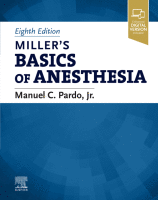Physical Address
304 North Cardinal St.
Dorchester Center, MA 02124

HEALTH, HEALTH CARE, AND CLIMATE CHANGE Climate change represents a defining challenge of our times, and tackling climate change could be the greatest global health opportunity of this century. Climate change poses clear environmental, technologic, and economic challenges that affect…

INTRODUCTION Human interest in sleep is as old as humanity itself, but the specialty of sleep medicine is less than 50 years old. The characterization of sleep into periods based on electroencephalography (EEG) and the presence or absence of rapid…

INTRODUCTION Patients with serious illnesses often have an intense burden of symptoms that are poorly treated, such as pain, dyspnea, anxiety, and depression. These patients also have frequent but often unsatisfying interactions with the health care team, often as a…

INTRODUCTION Clinical anesthesia practice is often considered a model for quality and safety in medicine. In 1999 the Institute of Medicine report, “To Err Is Human” specifically identified anesthesia as “an area in which very impressive improvements in safety have…

INTRODUCTION Cardiopulmonary resuscitation (CPR) was initially defined over 50 years ago as the administration of mouth-to-mouth ventilation and closed chest cardiac compressions in a pulseless patient. Since that time, significant advances in CPR and cardiovascular life support have been made.…

INTRODUCTION Expertise in pain management is a core element of anesthetic care, and from this expertise there has emerged a distinct distinct medical specialty: pain medicine. Regardless of chronicity, the practice of this medical specialty is inherently multifaceted and multidisciplinary.…

INTRODUCTION Background Injury is the leading cause of fatality worldwide, causing more than 5 million deaths—9% of the world's deaths—each year. According to the Centers for Disease Control and Prevention (CDC), trauma accounted for nearly 230,000 U.S. deaths in 2018,…

INTRODUCTION The practice of anesthesiology historically focused on the care of an individual patient undergoing surgery. The specialty has an impressive track record for improving quality and safety in patient care (also see Chapter 46 ). Although anesthesia practice continues…

ICU DEFINITIONS, INTERPROFESSIONAL CARE, AND PHYSICIAN STAFFING Intensive care units (ICUs), as defined by The Joint Commission, are geographically separated nursing care areas that provide intensive observation, diagnosis, and therapeutic procedures for patients who are critically ill. Though the first…

Postoperative pain is a complex physiologic reaction to tissue injury. For many patients, the primary concern about surgery is how much pain they will experience after the procedure. Similarly, postoperative pain management is an integral part of anesthesia care. Postoperative…